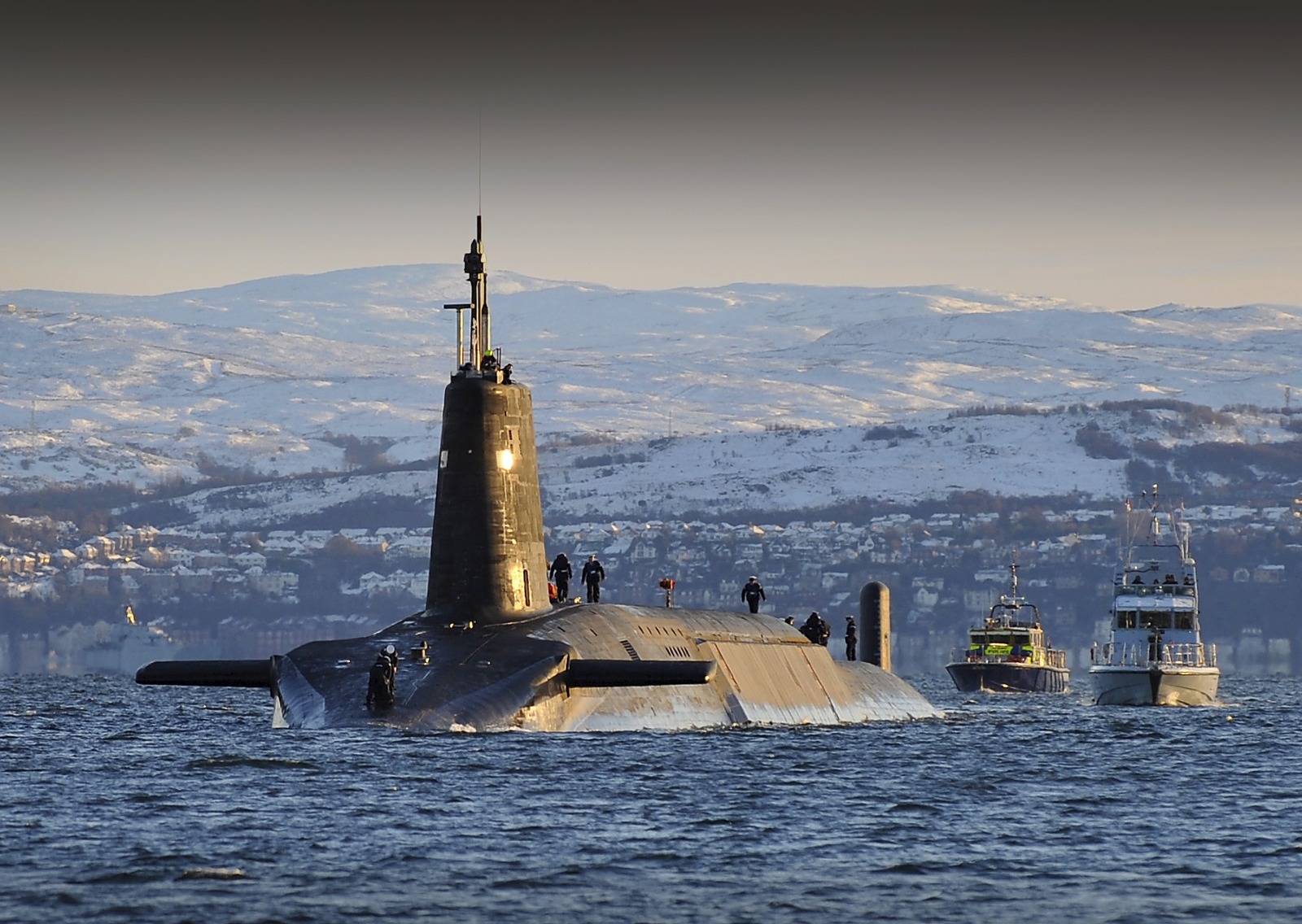A British Royal Navy submarine narrowly avoided a catastrophic failure when its crew identified a malfunction in a depth-measuring device just in time to prevent it from reaching its maximum depth limit, known as the “crush depth,” the UK-based tabloid The Sun reported on Nov. 19.
The report said that a decade-old Vanguard-class submarine, equipped with Trident-2 doomsday missiles, was gearing up for a patrol mission when its depth sensors abruptly ceased functioning.
This mistake led the commander to assume the submarine was at a steady level when, in reality, it was still descending and sinking.
As the submarine ventured into the “danger zone” of the Atlantic Ocean, engineers at the stern detected anomalies in the data from the second depth sensor, prompting an immediate alarm.
“It’s not the engineers’ job to control the sub’s depth, but they saw how deep they were and realized something was wrong,” a source told The Sun.
The unexpected descent into the “danger zone” caused panic aboard the submarine, which was not supposed to be in that location and was still in the process of diving.
Fortunately, engineers averted a potential disaster by halting the submarine and preventing its nuclear reactor from plunging further at the last moment.

Details regarding the specific submarine or depths involved remain undisclosed for security reasons. Likewise, the precise date of the incident remains unspecified.
The incident, however, underscores the effective functioning of safety systems aboard the Vanguard-class vessel. In response to the incident, Naval authorities have initiated an urgent safety probe, although sources indicate that the near-miss did not disrupt the UK’s nuclear deterrent capabilities.
A Royal Navy spokesperson said, “We do not comment on operations. Our submarines continue to be deployed globally, protecting national interests.”
Since 1969, at least one Royal Navy submarine has consistently patrolled global waters, poised to retaliate in the event of a catastrophic attack on UK interests or the British mainland.
Currently, the UK possesses four Vanguard-class submarines, with only two operational—one undergoing refurbishment and the other undergoing sea trials.
USS Thresher Disaster
The submarine encountered a potential disaster similar to the June incident involving the implosion of the Titan submersible, all stemming from a malfunction in the depth gauge. The specific crush depth varies depending on the vessel, determined by the hull’s strength.
While the UK-based media outlet refrained from disclosing the exact model of the Royal Navy Vanguard-class sub or its definite crush depth for security reasons, previous tragedies shed light on the immense pressure required to crush a 500ft nuclear sub.
The USS Thresher, a prominent nuclear-powered attack submarine in the US Navy, experienced implosion during deep-diving tests off Cape Cod on 10 April 1963.
The submarine was crushed at a depth initially estimated to be between 1,300 and 2,000 feet, with a later analysis suggesting a depth of 2,400 feet. This tragic incident occurred during a routine test dive, leading to the loss of all 129 onboard.
In the 1960s, Soviet submarines posed a significant threat to America’s national security. At the time, the USS Thresher represented a leap forward in submarine design. It had enhancements such as increased speed, reduced noise, greater diving depth, and advanced sonar and weapons systems, making it a formidable adversary to its Soviet counterparts.
The USS Thresher, commissioned on August 3, 1961, dedicated the following year to conducting tests on weaponry and new equipment. These assessments included measuring radiated sound, shock testing, and participating in exercises with other submarines, yielding exceptional results.
The awaited ultimate challenge against Soviet submarines, however, had to be postponed until after an extensive maintenance period.
On April 9, 1963, the USS Thresher embarked on sea trials, accompanied by the submarine rescue vessel USS Skylark (ASR 20).
Following a shallow dive in the Gulf of Maine, the ships rendezvoused the next morning in deep waters for a two-hour dive, reaching Thresher’s deepest operating or test depth at 1,300 feet—an advancement nearly twice as deep as previous submarine classes.
Unfortunately, the USS Thresher descended beyond its crush depth, leading to implosion and the dispersion of its fragmented hull, nuclear reactor, and personnel onto the ocean floor.
The Navy’s inquiry determined that the probable cause of the disaster was significant flooding resulting from ruptured piping in the engine room.
- Contact the author at ashishmichel(at)gmail.com
- Follow EurAsian Times on Google News




